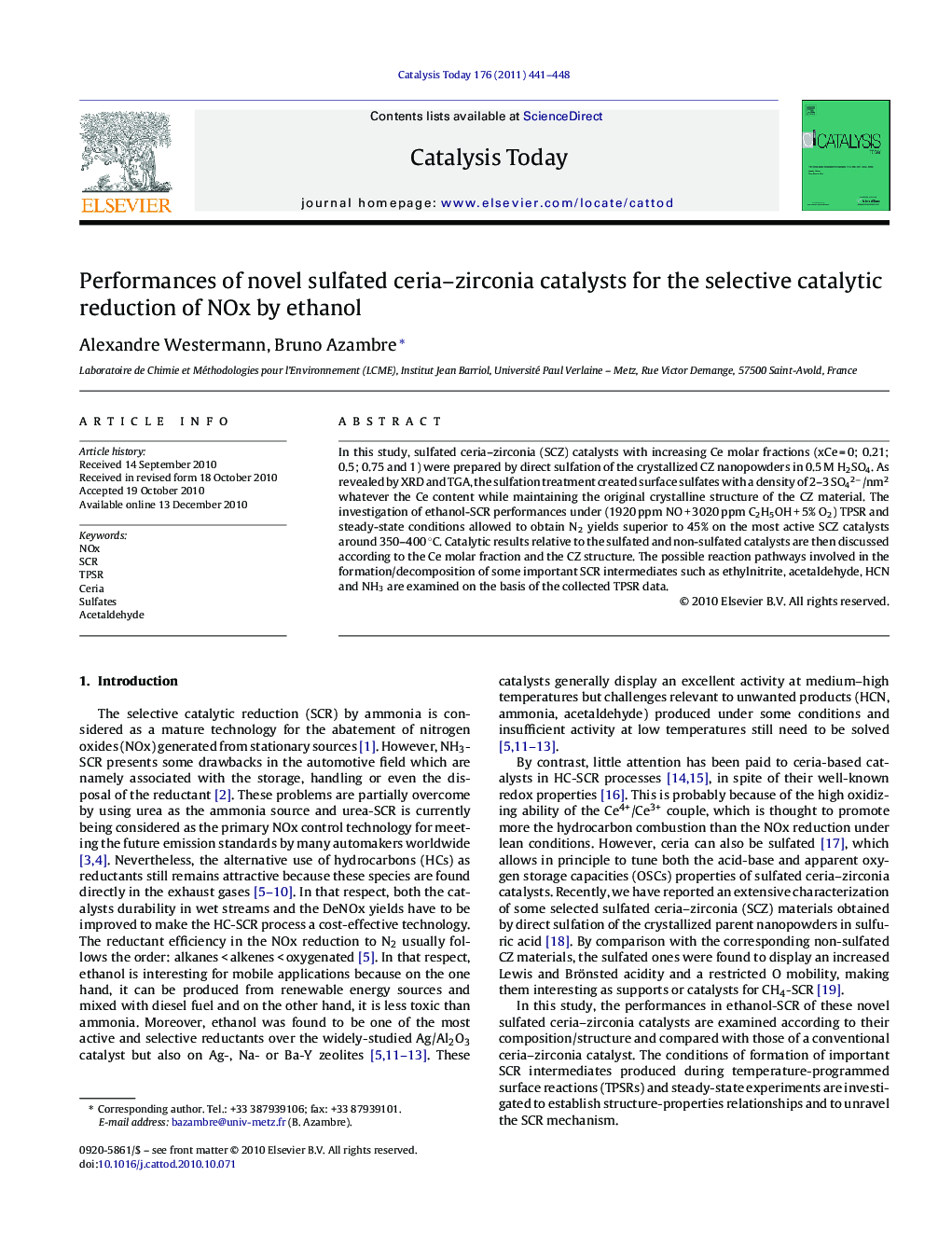| Article ID | Journal | Published Year | Pages | File Type |
|---|---|---|---|---|
| 55889 | Catalysis Today | 2011 | 8 Pages |
In this study, sulfated ceria–zirconia (SCZ) catalysts with increasing Ce molar fractions (xCe = 0; 0.21; 0.5; 0.75 and 1) were prepared by direct sulfation of the crystallized CZ nanopowders in 0.5 M H2SO4. As revealed by XRD and TGA, the sulfation treatment created surface sulfates with a density of 2–3 SO42−/nm2 whatever the Ce content while maintaining the original crystalline structure of the CZ material. The investigation of ethanol-SCR performances under (1920 ppm NO + 3020 ppm C2H5OH + 5% O2) TPSR and steady-state conditions allowed to obtain N2 yields superior to 45% on the most active SCZ catalysts around 350–400 °C. Catalytic results relative to the sulfated and non-sulfated catalysts are then discussed according to the Ce molar fraction and the CZ structure. The possible reaction pathways involved in the formation/decomposition of some important SCR intermediates such as ethylnitrite, acetaldehyde, HCN and NH3 are examined on the basis of the collected TPSR data.
Graphical abstractFigure optionsDownload full-size imageDownload high-quality image (230 K)Download as PowerPoint slide
